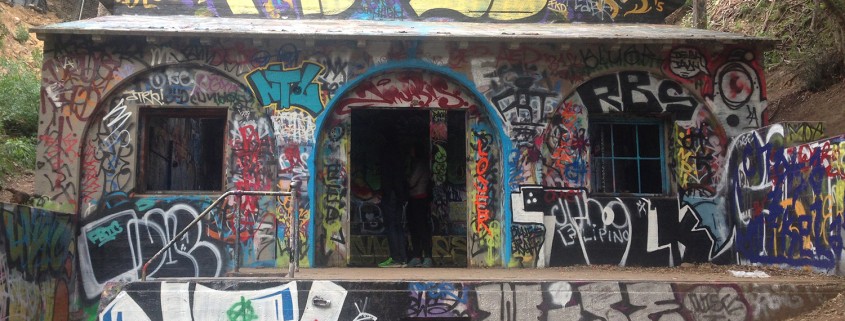Abandoned compound invites adventure seekers
My professor meant the question as a quick icebreaker, a way for everyone to share about themselves: “OK, everyone, name your favorite place in Los Angeles.”
Maybe I was tired from a day full of icebreakers, maybe I just wanted to shake up a dull class, but for whatever reason, my automatic answer was “Nazi camp.”
Obviously, this prompted questions. What should have been a five-minute activity turned into my 15 minutes of fame, as I spent that much time explaining the lore of Los Angeles’ very own abandoned Nazi compound to a room full of strangers.
Nazi camp is my favorite Los Angeles secret; a “secret” that I constantly blab about, clearly. The intended grandiose command center is now scattered, with decrepit structures hidden in Murphy Ranch near the upscale Pacific Palisades neighborhood.
Unfortunately, you need a car to access the compound. Exit the 405 North on Sunset Boulevard, then drive west until Capri Drive. Parking is free, albeit tricky, as it is in a residential area. At the end of the street is a fire road that marks the beginning of the trail.
Previously, when asked about the compound, I simply passed on what I’d heard, pretending I knew what I was talking about. I was afraid that the story I’d originally heard was too weird to be true, so I never actually researched the alleged Nazi compound. Instead, I threw out vague explanations.
For the purpose of journalistic ethics, I finally looked into the compound’s origins for this column. I emailed the president of Pacific Palisades, hoping to score a tell-all interview on the true story of the destroyed buildings. He didn’t respond, so I approached this like a research paper. I thoroughly combed through online sources, articles and Yahoo Answers! sections and summarized my findings.
In the 1930s, Murphy Ranch was owned by Winona and Norman Stephens. A German named Herr Schmidt, who claimed to have supernatural powers, convinced the couple that once Germany won World War II, the Nazi community would need a hidden command center in the United States. The Stephens proceeded to spend about $4 million, possibly with funding from Germany, on a large compound. The intended command center includes water and fuel tanks, a power station and other infrastructure. Plans for a four-story mansion never came to fruition, as funds dried up and federal agents eventually arrested Schmidt.
The property was then purchased by the Huntington Hartford Foundation and transitioned into an artist’s colony until the 1970s. Today, it remains an artists’ haven — for taggers. Old buildings are coated with layers of graffiti, creating plenty of Instagram opportunities.
When I first visited three years ago, the compound’s eeriness was multiplied by its emptiness. We were the only ones in the crumbling compound. Now, perhaps due to media attention and the increasing popularity of urban exploration, the area is crowded with locals and tourists alike. An Australian tourist explained that “Nazi camp” popped up when he researched Los Angeles tourist attractions. I responded politely, but in my head, I was aghast; the secret Nazi camp — a tourist attraction?
The hike to the buildings is not difficult. After walking along the fire road for about a mile, a break in the chain link fence leads you to the stairs. The stairs, 500 strong and sans railing, comprise the hike’s biggest challenge. Even though the actual hike is only a few miles, the stairs kept our legs sore for days.
After defeating the stairs, you can spend as much or as little time as you want exploring the grounds. Just left of the stairs is arguably the camp’s most photo-worthy building, the powerhouse. The graffitied structure is sturdy enough to climb, and the inside contains an electrical box and catwalk. Outside the powerhouse is a raised garden area, meticulously planned.
I wish I could offer you a comprehensive map of all the camp’s remaining structures, but because I’m geographically challenged, I wander aimlessly. On this trip, we found an old barn complete with stables. A graffiti artist showed us his just-finished work, and we tentatively visited the second floor, on the verge of collapse
If you can’t handle climbing back up the stairs, you can follow the road back out through the original entry gate. A second set of stairs offers access to a huge water tower and panoramic views that prompted my friend from the East Coast, Nicole, to exclaim, “There’s no way this is natural!”
The Nazi camp is one of my worst-kept secrets. A perfect daytime adventure, the trip is full of weird history and photo-ops. Trust me, it’s a great conversation starter.
Erin Rode is a freshman majoring in environmental engineering and print and digital journalism. Her column, “The Rode Less Traveled,” runs Thursdays.

